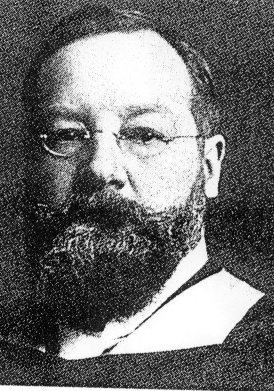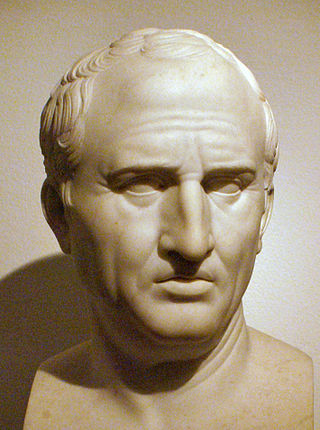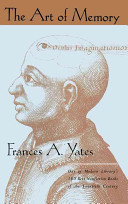
Aristotle was an Ancient Greek philosopher and polymath. His writings cover a broad range of subjects spanning the natural sciences, philosophy, linguistics, economics, politics, psychology, and the arts. As the founder of the Peripatetic school of philosophy in the Lyceum in Athens, he began the wider Aristotelian tradition that followed, which set the groundwork for the development of modern science.

Giordano Bruno was an Italian philosopher, poet, cosmological theorist and esotericist. He is known for his cosmological theories, which conceptually extended to include the then-novel Copernican model. He proposed that the stars were distant suns surrounded by their own planets (exoplanets), and he raised the possibility that these planets might foster life of their own, a cosmological position known as cosmic pluralism. He also insisted that the universe is infinite and could have no center.

Henri-Louis Bergson was a French philosopher, who was influential in the traditions of analytic philosophy and continental philosophy, especially during the first half of the 20th century until the Second World War, but also after 1966 when Gilles Deleuze published Le Bergsonisme. Bergson is known for his arguments that processes of immediate experience and intuition are more significant than abstract rationalism and science for understanding reality.

Observation in the natural sciences is an act or instance of noticing or perceiving and the acquisition of information from a primary source. In living beings, observation employs the senses. In science, observation can also involve the perception and recording of data via the use of scientific instruments. The term may also refer to any data collected during the scientific activity. Observations can be qualitative, that is, the absence or presence of a property is noted and the observed phenomenon described, or quantitative if a numerical value is attached to the observed phenomenon by counting or measuring.

Cognitive neuroscience is the scientific field that is concerned with the study of the biological processes and aspects that underlie cognition, with a specific focus on the neural connections in the brain which are involved in mental processes. It addresses the questions of how cognitive activities are affected or controlled by neural circuits in the brain. Cognitive neuroscience is a branch of both neuroscience and psychology, overlapping with disciplines such as behavioral neuroscience, cognitive psychology, physiological psychology and affective neuroscience. Cognitive neuroscience relies upon theories in cognitive science coupled with evidence from neurobiology, and computational modeling.

Ramon Llull, anglicised as Raymond Lully or Lull, was a philosopher, theologian, poet, missionary, Christian apologist and former knight from the Kingdom of Majorca.
Experimental psychology refers to work done by those who apply experimental methods to psychological study and the underlying processes. Experimental psychologists employ human participants and animal subjects to study a great many topics, including sensation, perception, memory, cognition, learning, motivation, emotion; developmental processes, social psychology, and the neural substrates of all of these.

Edward Bradford Titchener was an English psychologist who studied under Wilhelm Wundt for several years. Titchener is best known for creating his version of psychology that described the structure of the mind: structuralism. After becoming a professor at Cornell University, he created the largest doctoral program at that time in the United States. His first graduate student, Margaret Floy Washburn, became the first woman to be granted a PhD in psychology (1894).

In its most common sense, methodology is the study of research methods. However, the term can also refer to the methods themselves or to the philosophical discussion of associated background assumptions. A method is a structured procedure for bringing about a certain goal, like acquiring knowledge or verifying knowledge claims. This normally involves various steps, like choosing a sample, collecting data from this sample, and interpreting the data. The study of methods concerns a detailed description and analysis of these processes. It includes evaluative aspects by comparing different methods. This way, it is assessed what advantages and disadvantages they have and for what research goals they may be used. These descriptions and evaluations depend on philosophical background assumptions. Examples are how to conceptualize the studied phenomena and what constitutes evidence for or against them. When understood in the widest sense, methodology also includes the discussion of these more abstract issues.

Dame Frances Amelia Yates was an English historian of the Renaissance, who wrote books on the history of esotericism.

The method of loci is a strategy for memory enhancement, which uses visualizations of familiar spatial environments in order to enhance the recall of information. The method of loci is also known as the memory journey, memory palace, journey method, memory spaces, or mind palace technique. This method is a mnemonic device adopted in ancient Roman and Greek rhetorical treatises. Many memory contest champions report using this technique to recall faces, digits, and lists of words.

Ramism was a collection of theories on rhetoric, logic, and pedagogy based on the teachings of Petrus Ramus, a French academic, philosopher, and Huguenot convert, who was murdered during the St. Bartholomew's Day massacre in August 1572.

Picatrix is the Latin name used today for a 400-page book of magic and astrology originally written in Arabic under the title Ghāyat al-Ḥakīm, which most scholars assume was originally written in the middle of the 11th century, though an argument for composition in the first half of the 10th century has been made. The Arabic title translates as The Aim of the Sage or The Goal of The Wise. The Arabic work was translated into Spanish and then into Latin during the 13th century, at which time it got the Latin title Picatrix. The book's title Picatrix is also sometimes used to refer to the book's author.
The cognitive revolution was an intellectual movement that began in the 1950s as an interdisciplinary study of the mind and its processes, from which emerged a new field known as cognitive science. The preexisting relevant fields were psychology, linguistics, computer science, anthropology, neuroscience, and philosophy. The approaches used were developed within the then-nascent fields of artificial intelligence, computer science, and neuroscience. In the 1960s, the Harvard Center for Cognitive Studies and the Center for Human Information Processing at the University of California, San Diego were influential in developing the academic study of cognitive science. By the early 1970s, the cognitive movement had surpassed behaviorism as a psychological paradigm. Furthermore, by the early 1980s the cognitive approach had become the dominant line of research inquiry across most branches in the field of psychology.
The art of memory is any of a number of loosely associated mnemonic principles and techniques used to organize memory impressions, improve recall, and assist in the combination and 'invention' of ideas. An alternative term is "Ars Memorativa" which is also translated as "art of memory" although its more literal meaning is "Memorative Art". It is also referred to as mnemotechnics. It is an 'art' in the Aristotelian sense, which is to say a method or set of prescriptions that adds order and discipline to the pragmatic, natural activities of human beings. It has existed as a recognized group of principles and techniques since at least as early as the middle of the first millennium BCE, and was usually associated with training in rhetoric or logic, but variants of the art were employed in other contexts, particularly the religious and the magical.
Gordon Howard Bower was a cognitive psychologist studying human memory, language comprehension, emotion, and behavior modification. He received his Ph.D. in learning theory from Yale University in 1959. He held the A. R. Lang Emeritus Professorship at Stanford University. In addition to his research, Bower also was a notable adviser to numerous students, including John R. Anderson, Lawrence W. Barsalou, Lera Boroditsky, Keith Holyoak, Stephen Kosslyn, Alan Lesgold, Mark A. Gluck, and Robert Sternberg, among others.

Orality is thought and verbal expression in societies where the technologies of literacy are unfamiliar to most of the population. The study of orality is closely allied to the study of oral tradition.

Philosophy is a systematic study of general and fundamental questions concerning topics like existence, reason, knowledge, value, mind, and language. It is a rational and critical inquiry that reflects on its own methods and assumptions.
Eidetic memory, also known as photographic memory and total recall, is the ability to recall an image from memory with high precision—at least for a brief period of time—after seeing it only once and without using a mnemonic device.
Mary Cheves West Perky (1874–1940) was an American psychologist and one of the twenty-one female students who studied under Edward B. Titchener at Cornell University. She received a Ph.D. in 1910 for her groundbreaking work on visual, auditory, and olfactory imagery. Her findings have had a considerable impact by being cited by name in the title of an article as recently as 2012. ] According to her findings, perception is not merely a representation of the external world, but is also influenced by thoughts, expectations, and mental images. In the same year, she performed the "Banana Experiment," which demonstrated how perception and visual imagery could be confused; a phenomenon known as the Perky Effect. She concluded that mental imagery is not merely a weak form of perception, but it can directly influence our sensory perceptions. which examines the link between mental imagery and visual perception.














